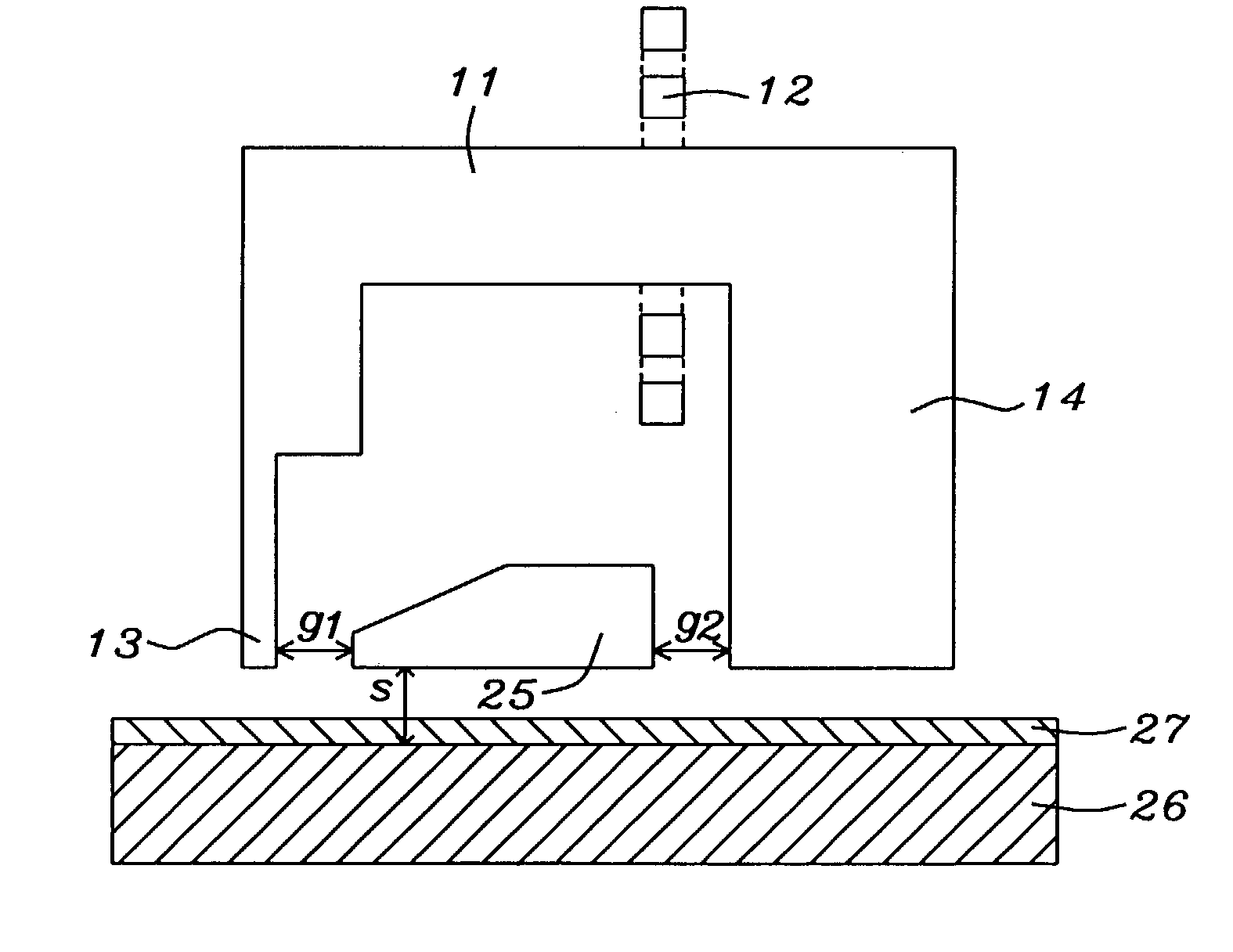Perpendicular magnetic writer with magnetic potential control shield
a magnetic writer and magnetic potential technology, applied in the field of magnetic disk systems, can solve problems such as limiting the achievable recording density, and achieve the effect of increasing the resistance of flux propagation and greater control over the path
- Summary
- Abstract
- Description
- Claims
- Application Information
AI Technical Summary
Benefits of technology
Problems solved by technology
Method used
Image
Examples
1st embodiment
1st Embodiment
[0023]A first embodiment of the invention is illustrated in FIG. 2. Magnetic yoke 11 may be typically thought of as comprising two parts, a vertical part that terminates in pole tip 13 (typically up to about 2 microns thick and up to about 12 microns long) and a horizontal part (typically between about 1 and 5 microns thick and between about 2 and 12 microns long) that is connected to return pole 14. Suitable materials for the yoke include (but are not limited to) Co, Ni, Fe, and their alloys, including amorphous magnetic materials. Suitable materials for return pole 14 include permalloy and other Co, CoFe, and NiFeCo alloys or amorphous compounds and it is between about 1 and 5 microns thick and between about 2 and 12 microns long. Field coil 12 surrounds the yoke.
[0024]Suitable materials for vertical recording layer 27 include CoCrPtO and CoCrFeB. This layer is typically between about 0.01 and 0.03 microns thick while the underlayer, of magnetically soft material, 26...
2nd embodiment
2nd Embodiment
[0029]The concept of magnetic potential / flux leakage control can be also applied to perpendicular writers through a modification of the extended return pole itself. As shown in FIG. 4a, the vertical thickness of the modified extended return pole 35 (which is between about 1 and 10 microns long) is reduced to be of the order of S, making it between about 0.01 and 0.2 microns thick. Suitable materials for this modified extended return pole include NiFe, CoFeNi, FeAlN, CoFe, their alloys, and amorphous magnetic materials.
[0030]As a result, the flux leakage from the main pole to the extended return pole is significantly reduced so the extended portion of the return pole acts as an ideal shield without causing large undershoot. We refer this modified head as a flux-leakage-reducing (FLR) extended return pole head. The calculated fields comparing the characteristics of the extended return pole to the prior art are plotted in FIG. 5, with curve 51 being for a writer using the...
3rd embodiment
3rd Embodiment
[0033]FIG. 6 shows a third embodiment of the invention. As should be apparent, it combines the novel features of the first two embodiments into a single structure. Its manufacturing cost is only slightly more than that of the first two embodiments but it offers the advantage of greater control over where the return flux encounters the most reluctance.
PUM
 Login to View More
Login to View More Abstract
Description
Claims
Application Information
 Login to View More
Login to View More - R&D
- Intellectual Property
- Life Sciences
- Materials
- Tech Scout
- Unparalleled Data Quality
- Higher Quality Content
- 60% Fewer Hallucinations
Browse by: Latest US Patents, China's latest patents, Technical Efficacy Thesaurus, Application Domain, Technology Topic, Popular Technical Reports.
© 2025 PatSnap. All rights reserved.Legal|Privacy policy|Modern Slavery Act Transparency Statement|Sitemap|About US| Contact US: help@patsnap.com



